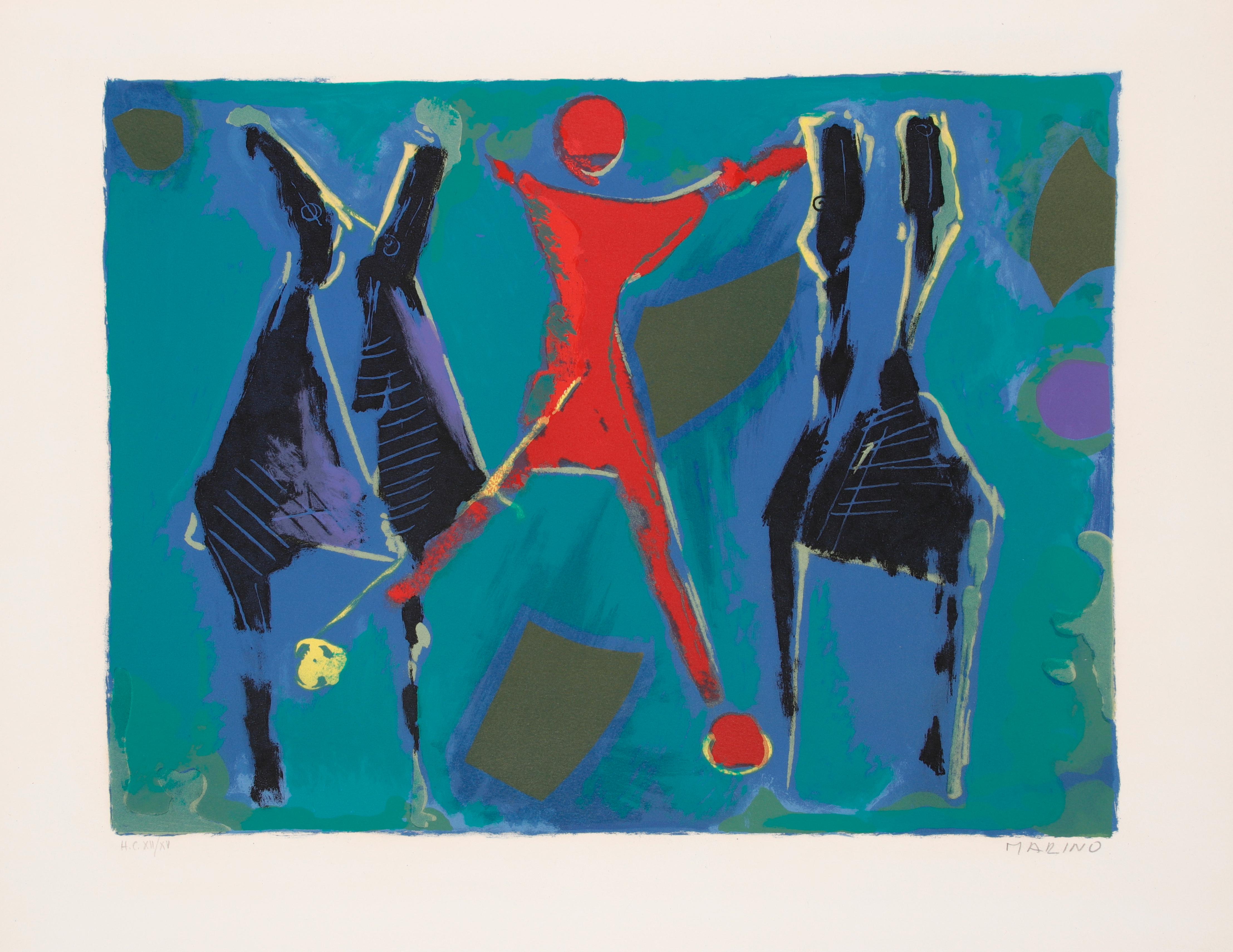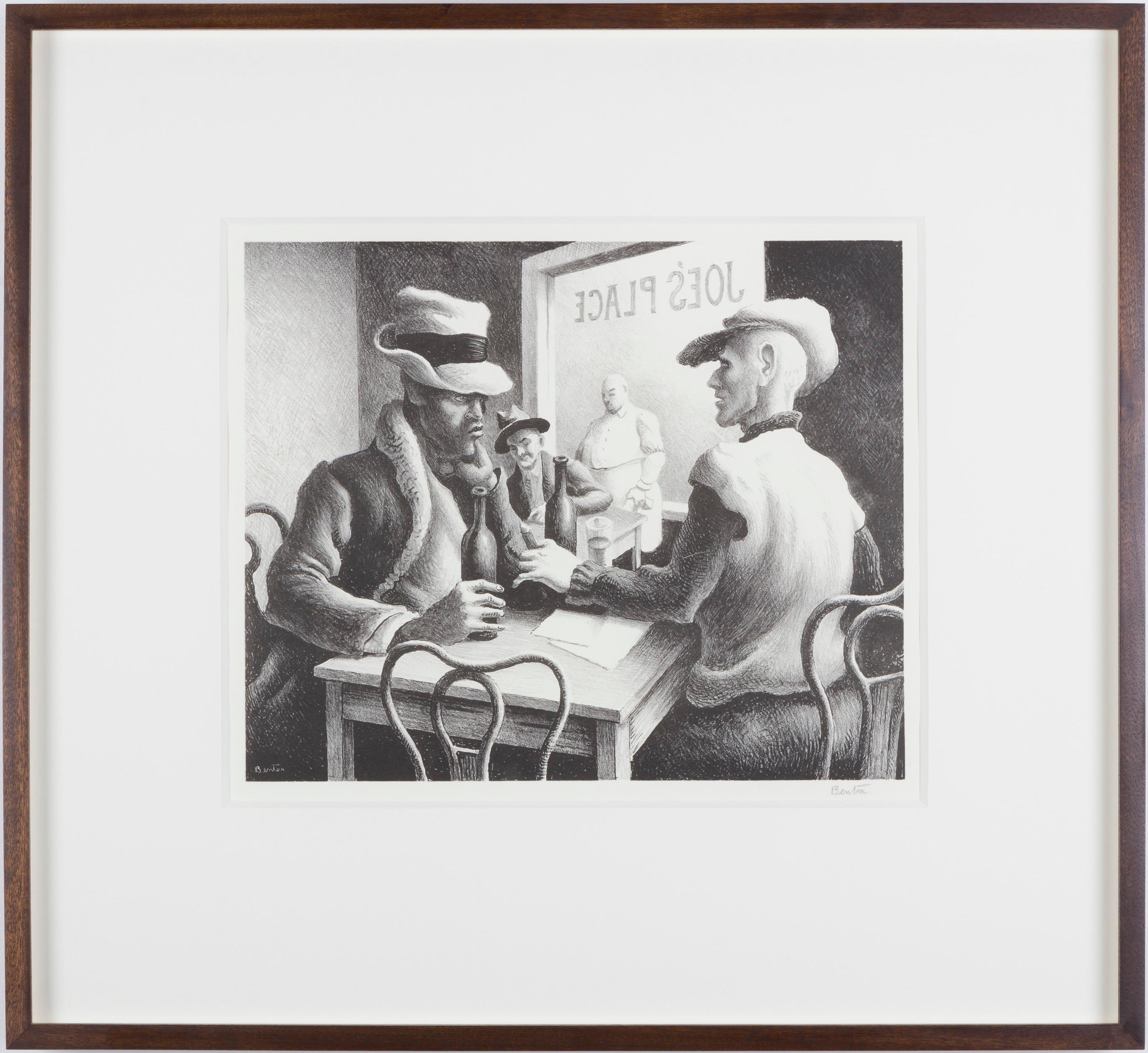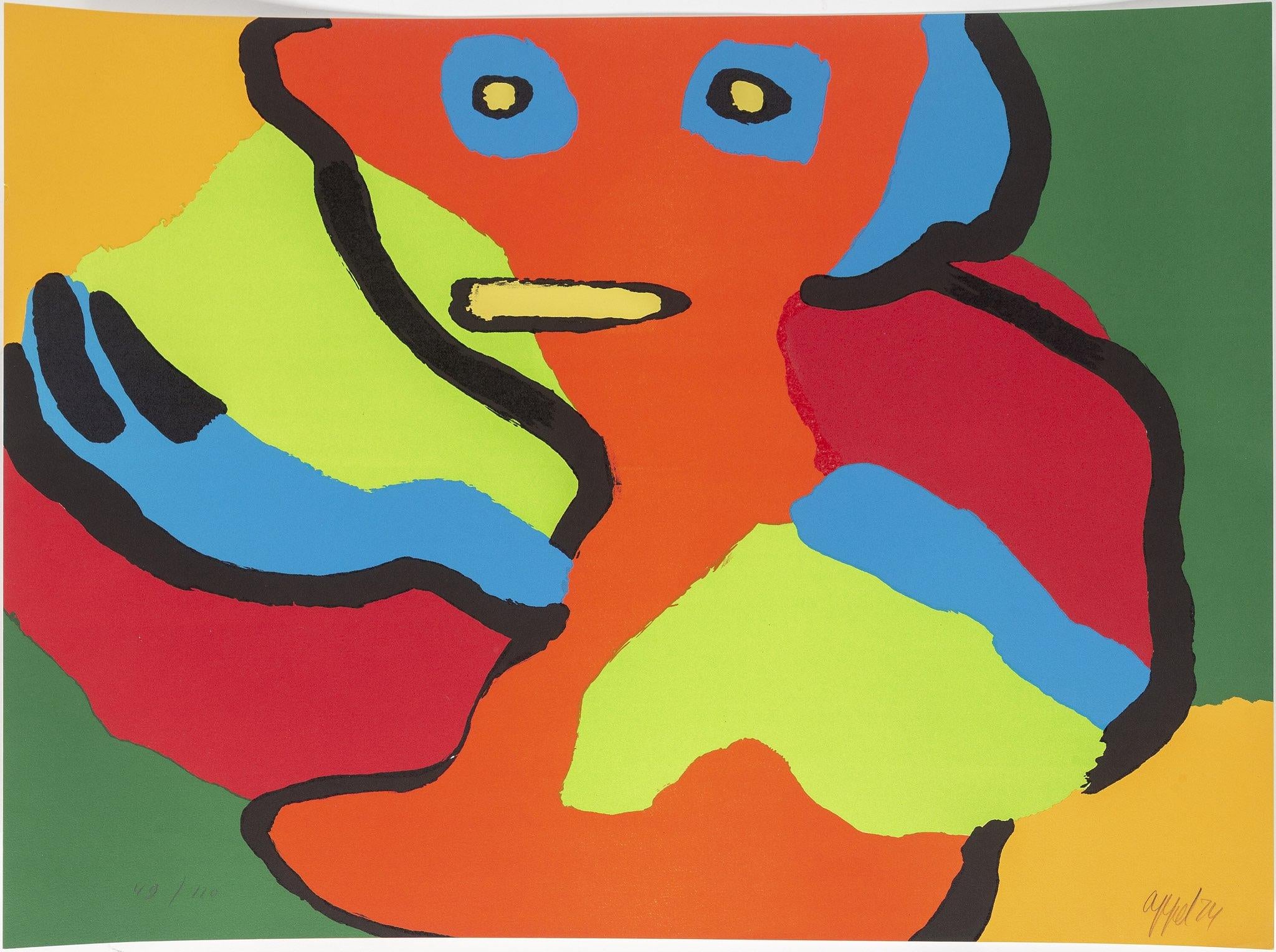Marc Chagall"Carte de Voeux #731, " Lithograph by Marc Chagall in Chagall Catalog Raisonne1974
1974
About the Item
- Creator:Marc Chagall (1887 - 1985, French)
- Creation Year:1974
- Dimensions:Height: 21 in (53.34 cm)Width: 18.25 in (46.36 cm)
- Medium:
- Movement & Style:
- Period:
- Condition:
- Gallery Location:Milwaukee, WI
- Reference Number:
Marc Chagall
Described by art critic Robert Hughes as "the quintessential Jewish artist of the twentieth century," the Russian-French modernist Marc Chagall worked in nearly every artistic medium. Influenced by Symbolism, Fauvism, Cubism and Surrealism, he developed his own distinctive style, combining avant-garde techniques and motifs with elements drawn from Eastern European Jewish folk art.
Born Moishe Segal in 1887, in Belarus (then part of the Russian empire), Chagall is often celebrated for his figurative paintings, but he also produced stained-glass windows for the cathedrals of Reims and Metz, in France; for the United Nations, in New York; and for the Hadassah Hospital in Jerusalem, as well as book illustrations, stage sets, ceramics, tapestries and fine-art prints. Characterized by a bold color palette and whimsical imagery, his works are often narrative, depicting small-village scenes and quotidian moments of peasant life, as in his late painting The Flight into Egypt from 1980.
Before World War I, Chagall traveled between St. Petersburg, Paris and Berlin. When the conflict broke out, he returned to Soviet-occupied Belarus, where he founded the Vitebsk Arts College before leaving again for Paris in 1922. He fled to the United States during World War II but in 1947 returned to France, where he spent the rest of his life. His peripatetic career left its mark on his style, which was distinctly international, incorporating elements from each of the cultures he experienced.
Marc Chagall remains one of the past century’s most respected talents — find his art on 1stDibs.
- ShippingRetrieving quote...Ships From: Milwaukee, WI
- Return PolicyA return for this item may be initiated within 14 days of delivery.
- "Derriere Le Miroir, " Three Original Color Lithographs by Saul SteinbergBy Saul SteinbergLocated in Milwaukee, WI"Derriere Le Miroir" is an original color lithograph signed by the artist Saul Steinberg. The artist's signature is in the bottom left margin. Image Size: 14"x20" Frame Size: 25 5/8...Category
1970s American Modern Figurative Prints
MaterialsPaper, Lithograph
- "Five Dutchmen with Hats, " Original Lithograph signed by Claude WeisbuchBy Claude WeisbuchLocated in Milwaukee, WI"Five Dutchmen with Hats" is an original lithograph by Claude Weisbuch. The artist signed the piece lower right and wrote the edition number (EA 15/30) in the lower left. This piece ...Category
1970s Modern Figurative Prints
MaterialsLithograph, Paper
- "La Compagne Ed: ETAT, " Original Color Lithograph signed by Claude WeisbuchBy Claude WeisbuchLocated in Milwaukee, WI"La Lecon Du Professor Tulp" is an original lithograph by Claude Weisbuch. The artist signed the piece lower right and wrote the edition (ETAT) in the lower left. This piece depicts ...Category
1970s Modern Figurative Prints
MaterialsLithograph, Paper
- "Boy With Book Looking Out Window, " Original Lithograph print classic giftBy James Ormsbee ChapinLocated in Milwaukee, WI"Boy With Book Looking Out Window" is an original lithograph print by James Ormsbee Chapin. The artist signed the piece in pencil lower right. This piece depicts a boy looking out th...Category
1940s Modern Figurative Prints
MaterialsLithograph
- "Calligraphie Heroique, " Original Color Lithograph signed by Claude WeisbuchBy Claude WeisbuchLocated in Milwaukee, WI"Calligraphie Heroique" is an original color lithograph by Claude Weisbuch. The artist signed the piece in the lower right and wrote the edition number (116/275) in the lower left. T...Category
1970s Modern Figurative Prints
MaterialsLithograph
- "Robbialac, " Original Lithograph Poster by Lajos MartonBy Lajos MartonLocated in Milwaukee, WI"Robbialac" is an original lithograph poster by Lajos Marton. This poster features an abstracted man pouring out brightly-colored enamel pa...Category
1930s Modern Figurative Prints
MaterialsLithograph
- For the Love of GodBy Damien HirstLocated in Seoul, SOsilkscreen with glaze framed mint condition 73 x 58 cm ( framed size ) 57 x 42.5 cm ( Sheet Size ) signed, dated and numbered by the artist on front Provenance Other Criteria (...Category
Early 2000s Figurative Prints
MaterialsLucite, Lithograph
- From Color to Form VIIBy Marino MariniLocated in ZEIST, UTMarino Marini- From Color to Form VII Color lithograph on Arches paper (with watermark), 1969. Printed by Mourlot, Paris, published by Société Internationale d'Art XXe Siècle, Paris,...Category
1960s Modern Figurative Prints
MaterialsLithograph
- From Color to Form VIIIBy Marino MariniLocated in ZEIST, UTMarino Marini- From Color to Form VIII Color lithograph on Arches paper (with watermark), 1969. Printed by Mourlot, Paris, published by Société Internationale d'Art XXe Siècle, Par...Category
1960s Modern Figurative Prints
MaterialsLithograph
- Prodigal SonBy Thomas Hart BentonLocated in London, GBA fine impression with full margins published by Associated American Artists with their information label present - pictured in Art and Popular Religion in Evangelical America, 1815-...Category
1930s American Modern Landscape Prints
MaterialsLithograph
- DiscussionBy Thomas Hart BentonLocated in London, GBA fine impression with large full margins published by Associated American Artists.Category
1930s American Modern Figurative Prints
MaterialsLithograph
- Some People TogetherBy Karel AppelLocated in New York, NYSome People Together, 1974 Hand-signed and dated in pencil Color lithograph and screenprint Sheet 22 x 29 3/4 inches; 559 x 756 mm. Edition 110Category
1970s Modern Abstract Prints
MaterialsLithograph, Screen





